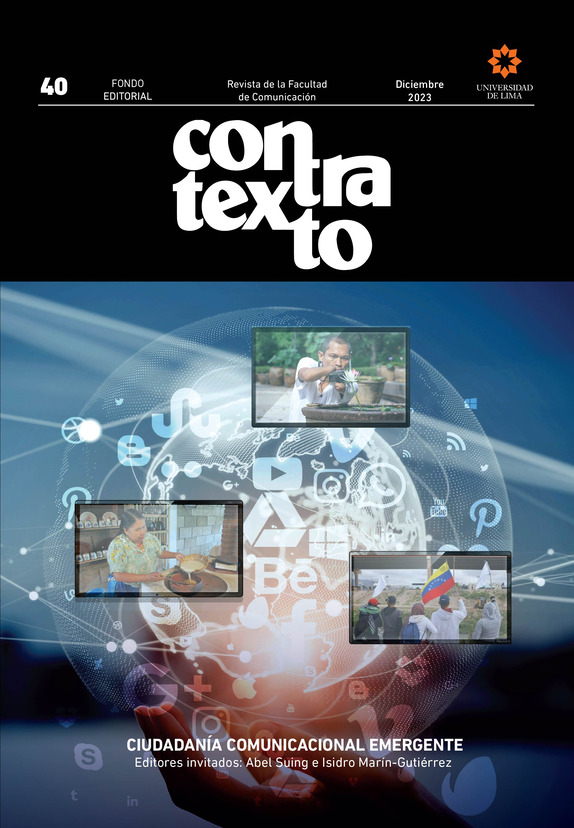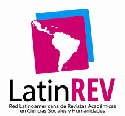Radio in prison. A media literacy strategy for the benefit of prison treatment in Spain
DOI:
https://doi.org/10.26439/contratexto2023.n40.6282Keywords:
prisons, prisioners, radio, media literacy, SpainAbstract
Prisoners in Spain also have the right to communicate and freely express their thoughts and ideas. This condition can be a reason to implement media literacy workshops in prisons, using radio as a tool for communication and expression. Even though they are not exempt from institutional control, as they are integrated into the so-called Individualized Penitentiary Treatment Plan, prisoners enhance their social and personal dimensions through these radio experiences, which function as a tool for rehabilitation and recovery. The article uses a qualitative methodology to analyze letters written by prisoners published in a book and interviews with 26 other inmates, all participants in Spanish prison radio programs, to understand their perception of the advantages of carrying out this activity. Through discourse analysis, it is possible to observe how they recognize improvements in their communication skills, self-perception of their abilities, enhanced self-esteem, improved relationships with others, and motivation to learn. The article concludes that these workshops help achieve the empowering objective of penitentiary treatment, although they still need a communication-oriented perspective.
Downloads
References
Anderson, H. (2012). Raising the civil dead. Prisoners and community radio. Peter Lang.
Anderson, H., & Bedford, C. (2017). Theorising the many faces of prisoner radio: developing a holistic framework through process and product. Media International Australia, 164(1), 92-103. https://doi.org/10.1177/1329878X17697829
Arnanz, E. (1988). Cultura y prisión: una experiencia y un proyecto de acción sociocultural penitenciaria. Ed. Popular.
Bacqué, M., & Biewener, C. (2015). L’empowerment, une pratique émancipatrice? La Découverte.
Barba, M., Digón, P., & Cruz, L. (2023). A través de las ondas con la Radio LibreMente de la prisión de Monterroso: experiencia de aprendizaje-servicio con alumnado universitario. En Alfabetización mediática y medios de comunicación: experiencias, aprendizajes y potencialidades para los medios comunitarios (pp. 71-82). Colectivo de Universitarios Activos (CUAC).
Consejo de Europa. (2020). Recommendation Rec (2006)2-rev of the Committee of Ministers to member States on the European Prison Rules. Adopted by the Committee of Ministers on 11 January 2006, at the 952nd meeting of the Ministers’ Deputies and revised and amended by the Committee of Ministers on 1 July 2020 at the 1380th meeting of the Ministers’ Deputies. Comisión Europea. https://bit.ly/3BKVP2Z
Constitución Española [Const.]. Art. 20. 29 de diciembre de 1978 (España). https://bit.ly/3RmhGDS
Contreras-Pulido, P. (2012). La voz de los presos en la radio universitaria: puentes con la ciudadanía. La experiencia de UniRadio, Universidad de Huelva. En Las radios universitarias, más allá de la radio. Las TIC como recursos de interacción radiofónica (pp.153-165). Ed. UOC.
Contreras-Pulido, P. (2014). La alfabetización mediática como herramienta de intervención en prisiones [Tesis de doctorado, Universidad de Huelva]. Repositorio Institucional de la Universidad de Huelva "Arias Montano". http://hdl.handle.net/10272/7946
Contreras-Pulido, P., & Aguaded, I. (2013). La percepción social a través de la mirada encerrada: el discurso de los presos de Huelva en UniRadio. Razón y palabra, (83), 658-681.
Contreras-Pulido, P., Martín-Pena, D., & Aguaded, I. (2015). Derribando el autoestigma: medios de comunicación en prisiones como aliados de la inclusión social. Cuadernos de información, (36), 15-26. https://dx.doi.org/10.7764/cdi.36.708
Cultiaux J., & Fugier P. (2017). Face à la domination. Dévoiler, résister, s’émanciper. L’Harmattan.
De Fontcuberta, M., & Guerrero, C. (2007). Una nueva propuesta para la educación en medios. Cuadernos de información, (20), 87-97. https://doi.org/10.7764/cdi.20.115
Ferrés, J., & Piscitelli, A. (2012). La competencia mediática: propuesta articulada de dimensiones e indicadores. Comunicar. Revista Científica Iberoamericana de Comunicación y Educación, (38), 75-82. https://doi.org/10.3916/C38-2012-02-08
Freire, P. (1968). Pedagogía del oprimido. Siglo xxi.
Gallardo García, R. M. (2017). Los programas y actividades del tratamiento penitenciario: la necesaria adaptación de la norma. Anuario da Facultade de Dereito da Universidade da Coruña, (20), 139-160. https://doi.org/10.17979/afdudc.2016.20.0.1918
Gil Cantero, F. (2013). Derechos humanos y reeducación en las prisiones. El derecho a la educación en el modelo Good lives. Ministerio de Educación. https://sede.educacion.gob.es/publiventa/descarga.action?f_codigo_agc=15540
Goffman, E. (1989). Estigma: la identidad deteriorada. Ed. Amorrortu.
Gozálvez-Pérez, V., & Contreras-Pulido, P. (2014). Empowering media citizenship through educommunication [Empoderar a la ciudadanía mediática desde la educomunicación]. Comunicar, 21(42), 129-136. http://dx.doi.org/10.3916/C42-2014-12
Herzog-Evans, M., & Contreras-Pulido. (2020). French prisoners cast their vote in the 2019 European Elections: an ad hoc analysis of their electoral choices and political attitudes. The Howard journal of crime and justice, 59(4), 505-530.
Icard, V. (2020). Ce n’est pas une prison, ici! Champ pénal/Penal field, (20). https://doi.org/10.4000/champpenal.11699
Krohling-Peruzzo, C. M. (2006). Radio comunitaria, educomunicación y desarrollo social. Contratexto, (14), 199-222. https://doi.org/10.26439/contratexto2006.n014.769
Ley Orgánica General Penitenciaria de 5 de octubre de 1979. Boletín Oficial del Estado n.º 239 (España). https://www.boe.es/buscar/act.php?id=BOE-A-1979-23708
Moeller, S. (2009). Nurturing freedom of expression through teaching global media literacy [Fomentar la libertad de expresión con la alfabetización mediática mundial]. Comunicar, (32), 65-72. https://doi.org/10.3916/c32-2009-02-005
Organización de las Naciones Unidas. (2015). Reglas Mínimas de las Naciones Unidas para el Tratamiento de los Reclusos. https://bit.ly/3ShUvvy
Posetti, J., & Bontcheva, K. (2020). Desinfodemia: descifrando la desinformación sobre el COVID-19. UNESCO. https://unesdoc.unesco.org/ark:/48223/pf0000374416_spa
Real Decreto 190 de 1996. Por el que se aprueba el Reglamento Penitenciario. 15 de febrero de 1996. Boletín Oficial del Estado n.º 40. https://www.boe.es/buscar/act.php?id=BOE-A-1996-3307
Rivers, W. L., & Schramm, W. (1973). Responsabilidad y comunicación de masas. En Responsabilidad y comunicación de masas (pp. 352-352).
Robert, D., & Frigon, S. (2006). La santé comme mirage des transformations carcérales. Déviance et Société, 30, 305-322. https://doi.org/10.3917/ds.303.0305
Roche, R. (1991). Laboratorio de investigación prosocial aplicada. http://www.prosocialidad.org/castellano/pro_ques.html
Torres, A. (1998). Estrategias y técnicas de investigación cualitativa. Afán Gráfico.
Vivas M. A., Parejo Cuellar. M., & Martín Pena. D. (2018). Divulgación científica y función social en las universidades. Ediciones Pirámide.
Downloads
Published
Issue
Section
License
All of the works published are licensed under a CC BY 4.0 Creative Commons Attribution license. (updated on March 1st 2021)
The content of the journal may be shared in any material or format. The content may be adapted, contributed upon and transformed. Both possibilities are only permitted in so far as they complete the following conditions:
- Attribution: Credit must be given where it is due, a link to the license must be provided and changes, if made, must be indicated. This should be done in the manner deemed appropriate, without suggesting that the licensor promotes you or your use of the material.
Ownership rights
The patrimonial rights for Contratexto are published under a Creative Commons BY 4.0 license, allowing authors to keep the patrimonial rights to their work without restrictions.
If a work published in Contratexto were to be copied, distributed, spread, or any other activities contemplated in the aforementioned license, the author(s) and the journal must be mentioned visibly and expressly.
Self-archive
This journal allows and encourages authors to post items submitted to the journal on personal websites or institutional repositories both prior to and after publication, while providing bibliographic details that credit, if applicable, its publication in this journal.

















